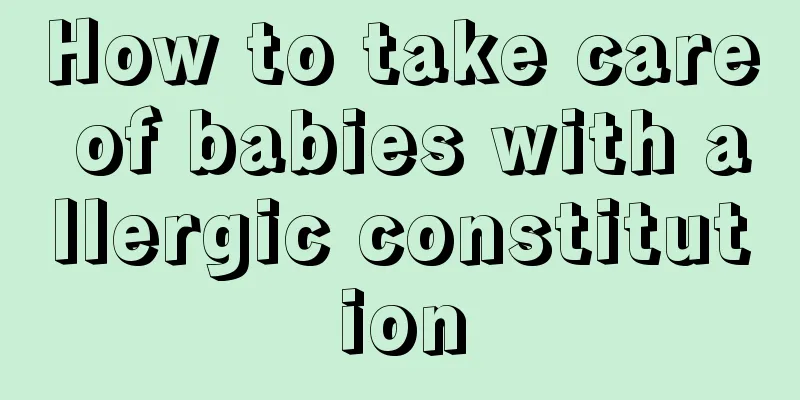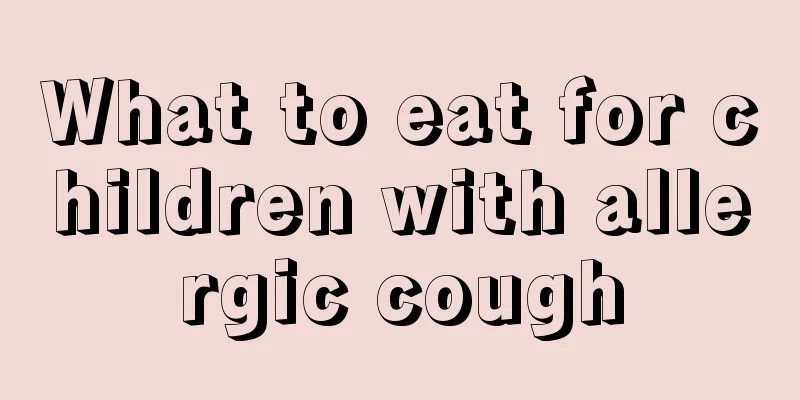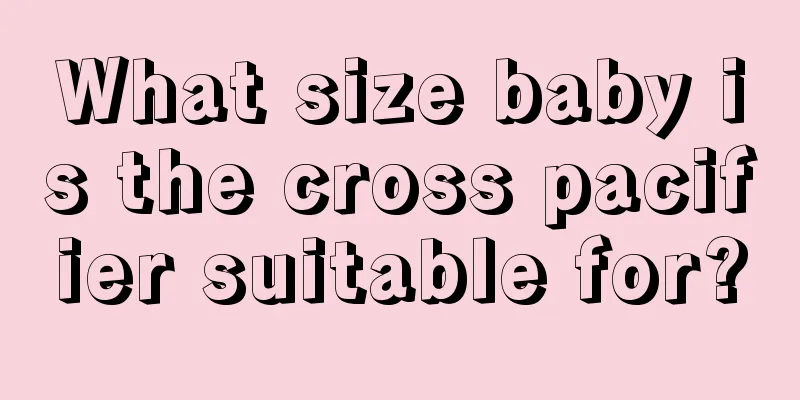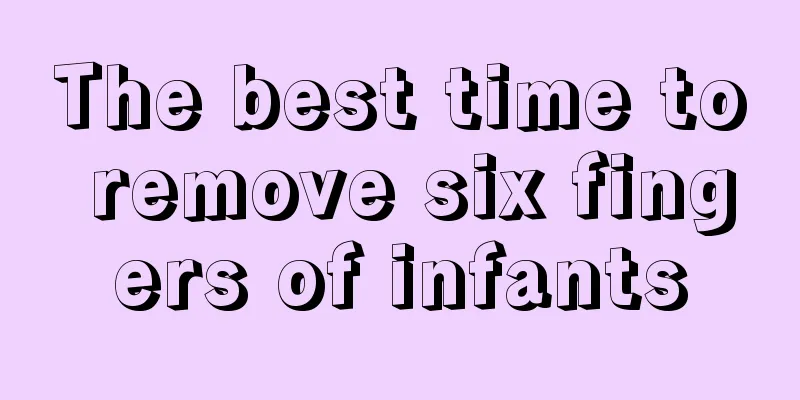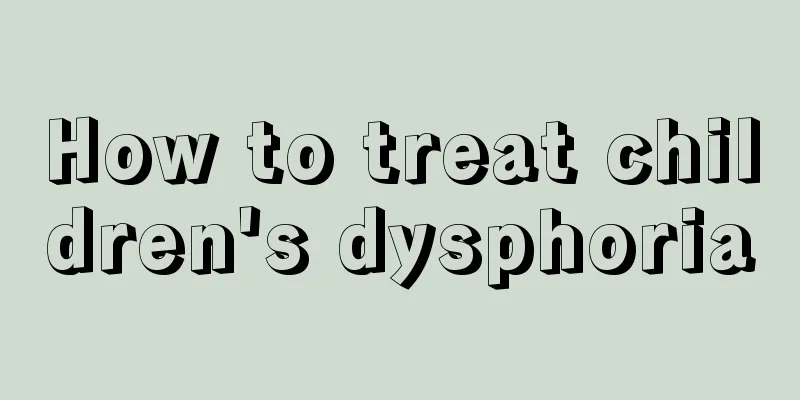Why do children have cold hands and feet when they have a fever?
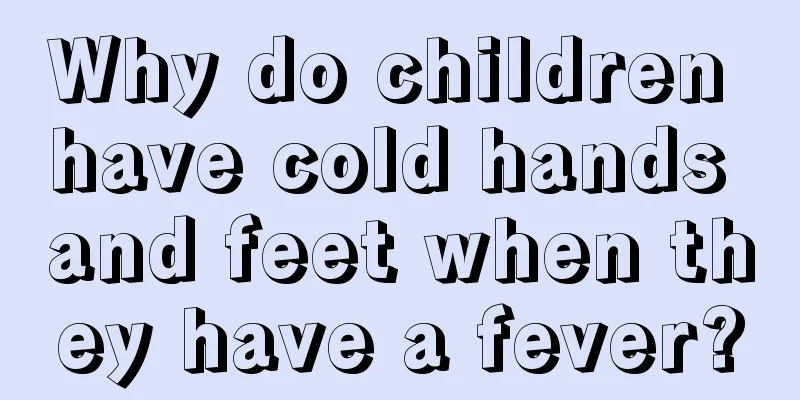
|
Some parents may feel confused. Their children are clearly having a fever and their faces are hot, but why are their hands and feet cold? This may be because the baby is in a state of internal fever, which is relatively more serious. It is necessary to cool down as soon as possible to effectively avoid further deterioration of the situation and the occurrence of burning internal organs. Therefore, parents must pay special attention to this issue. My baby has a fever and his hands and feet are cold. Why? The phenomenon of babies having fever and cold hands and feet is often seen clinically. The child has a high fever but cold hands and feet. After the body temperature gradually drops, the hands and feet slowly become warm again. In fact, this is a phenomenon of false cold and real heat. Although the child's hands and feet are cold, his internal organs are in a feverish state. This is especially common in infants under 3 years old. Children's limbs contain less blood than their internal organs, and the blood supply to their limbs is insufficient, so they are more likely to feel cold than adults. In addition, the development of children's nervous system is not yet complete, and the autonomic nervous system responsible for managing vasodilation and contraction is prone to disorder, resulting in the small blood vessels at the ends of the limbs being in a spasmodic contraction state and becoming cold when high fever first occurs. So, what should I do if my baby has a fever and cold hands and feet? Children with a cold usually only need oral medication when the temperature is above 39 degrees. If the temperature is below 39 degrees, physical therapy is usually sufficient. Because the human body has its own immune regulation, body temperature will rise when fighting bacteria and viruses. Pay attention to your body temperature at night, because the human body's immunity is particularly low at night, so it is easy to have a fever, while the temperature drops during the day. The situation of babies having fever but cold hands and feet is often seen in clinical practice. The child has a high fever but cold hands and feet. After the body temperature gradually drops, the hands and feet slowly become warm again. In fact, this is a phenomenon of false cold and true heat. Although the child's hands and feet are cold, his internal organs are in a hot state. This is especially common in infants under 3 years old. This phenomenon of false cold and real heat is mainly because babies (especially infants and young children) have less blood in their limbs than in their internal organs. Due to insufficient blood supply to their limbs, they are more likely to feel cold than adults. In addition, the baby's nervous system is not yet fully developed, and the autonomic nerves responsible for managing vasodilation and contraction are prone to disorder, causing the small blood vessels at the ends of the limbs to be in a spasmodic contraction state and become cold when the high fever first occurs. Many parents do not understand this situation. Once they find their baby's limbs are cold, they mistakenly think that the baby has caught a cold and is afraid of the cold, so they immediately wrap the baby tightly. As a result, the baby's body temperature cannot be dissipated in time and keeps rising, and even high fever and convulsions occur. If the body temperature exceeds 38.5 degrees, do not reduce the fever too quickly when the child has a fever. Many parents are eager to reduce their children's fever because they are worried that the fever will damage their children's brains and affect their intelligence. In fact, a simple fever will not affect the intellectual development of children. If the baby has other discomfort, it is recommended to see a doctor to see if there is any inflammation or something, and it is better to prescribe some medicine for the baby to take. |
<<: Six-month-old baby has fever and cold hands and feet
>>: What kind of soup is good for children in autumn?
Recommend
Treatment of hip synovitis in children
Every child is the apple of the parents' eyes...
What should I do if my 7-year-old child has fecal incontinence?
Fecal incontinence is a very troublesome situatio...
What's going on when a baby blows bubbles from his mouth?
Babies blow bubbles from their mouths because the...
What is the reason for the blue veins between the baby's eyes?
What can make parents protect their children with...
What can children eat to grow taller?
A child's height is related to his or her nor...
What fruits should children eat for indigestion
I believe that in life, many friends have experie...
The child screams when sleeping at night
Whether it is day or night, parents' hearts a...
What to do if your child has anorexia and picky eating
Anorexia and picky eating are common phenomena in...
What should I do if my one-year-old baby has eczema?
Sometimes, if the mother does not pay much attent...
What are the symptoms of neonatal encephalopathy during recovery?
Generally speaking, the symptoms of neonatal ence...
What causes itchy skin in children?
First, children's skin itching may be caused ...
Is nebulization useful for hand, foot and mouth disease?
Babies with hand, foot and mouth disease may show...
Early symptoms of cervical spine injury in infants
Infancy is the period when children are most susc...
What should I do if my child coughs badly?
Coughing is a common symptom in infants because t...
Reasons why babies cough at night
Coughing in babies at night is a relatively commo...

